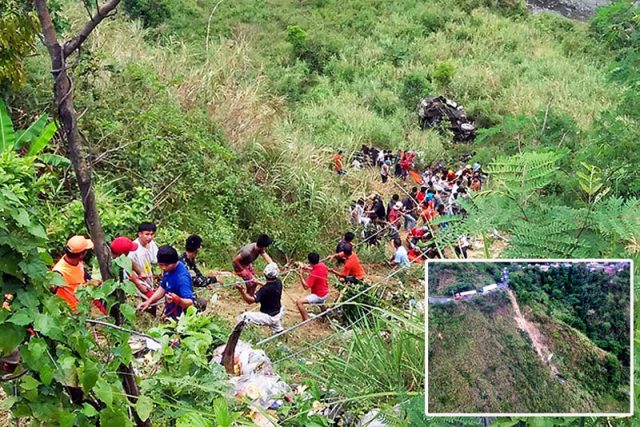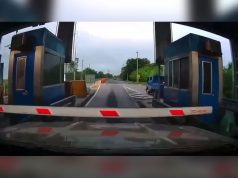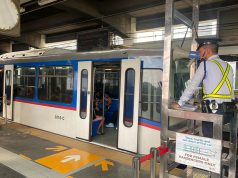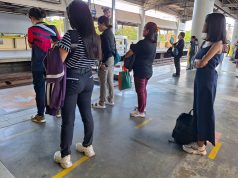
MANILA – Senators looking into a fatal road crash in Nueva Ecija on Tuesday scolded the district engineer on learning that apparent neglect was a factor in the April 18 accident that killed 30 passengers of a bus that plunged into a ravine.
Members of the Senate Committee on Public Works chaired by Sen. Manny Pacquiao learned that months before that accident in Carranglan town, the authorities’ attention was drawn to the destruction of the road barrier that could have prevented the bus from falling.
A truck got involved in an accident on July 12, 2016, destroying the concrete road barrier.
Senators grilling the district engineer of the Department of Public Works and Highways wanted to know what the DPWH had done in the past nine months since the barrier was destroyed.
Director Luisito Clavano of the Road Board told Senate probers the board normally funds such facilities as road barriers, but stressed that the proposal for such must come from the office of the district engineer, who is more familiar with the area.
Nonetheless, the Road Board said it had sent a team to the scene of the April 18 accident in Nueva Ecija soon after it happened, to plan what needed to be done on the highway.
Still, the Senate inquiry’s focus veered toward the district engineer of Nueva Ecija: did he even file a simple report about the destruction of the road barrier after the July 2016 truck accident in Barangay Capintalan?
District Engineer George Santos explained that although it is his office that must request the repair and restoration project for the road barrier, at the time he took office in September 2016, that highway was covered by an existing road maintenance contract held by a different agency.
Sen. Joel Villanueva was unconvinced: so, no one can do anything to prevent the next accident?
Engr. Santos replied that he did make a report to his counterpart in the agency holding the maintenance contract, but it was just a “verbal” report.
He admitted this was a lapse and he should have filed an official report.
DPWH Undersecretary Raul Asis elaborated on the matter. He said the portion of the highway where the accident happened was covered by a long-term performance-based program, and it was not DPWH that was tasked to maintain it. This, he added, could have accounted for Santos’ confusion about the blurred accountability.
Still, Asis conceded that they should have alerted the contractor so the destroyed barrier could have been restored, especially since it has been nine months since the truck accident.
However, when Majority Leader Vicente Sotto III asked Asis what were the chances the bus would have been prevented from falling into the ravine if the barrier had been restored, Asis said that with the way the bus had been moving quickly, the barrier would not have stopped the plunge.
He explained there are three factors in road safety: the condition of the vehicle, the behavior of the driver and the condition of the road.
In Asis’s view, the road-worthiness of the bus in the April accident was the major problem.
He also explained that barriers are really not built to be too strong because if they are too solid, passengers could in fact be killed on impact once a vehicle crashes into the barrier.
It is better to build flexible barriers so that when a vehicle hits them, the barrier tends to toss back the vehicle on the road.
In some countries, Asis explained, the barriers are built with rubber components to absorb the impact.
For his part, Villanueva said road signs might have helped prevent the accident.
According to Assistant Secretary Mark de Leon of the Department of Transportation, investigation by DOTr showed the bus engine was over 30 years old, but its registration listed this down only at 11 years. An examination of the chassis and engine showed it could not be younger than 30 years old.
The DOTr officials recommended that in the registration of vehicles, the age of the vehicle should be based on the age of the engine and chassis.
They also pitched the setting up of a drivers’ academy to ensure drivers undergo training not just in skills but also in their attitude, especially toward passengers.









